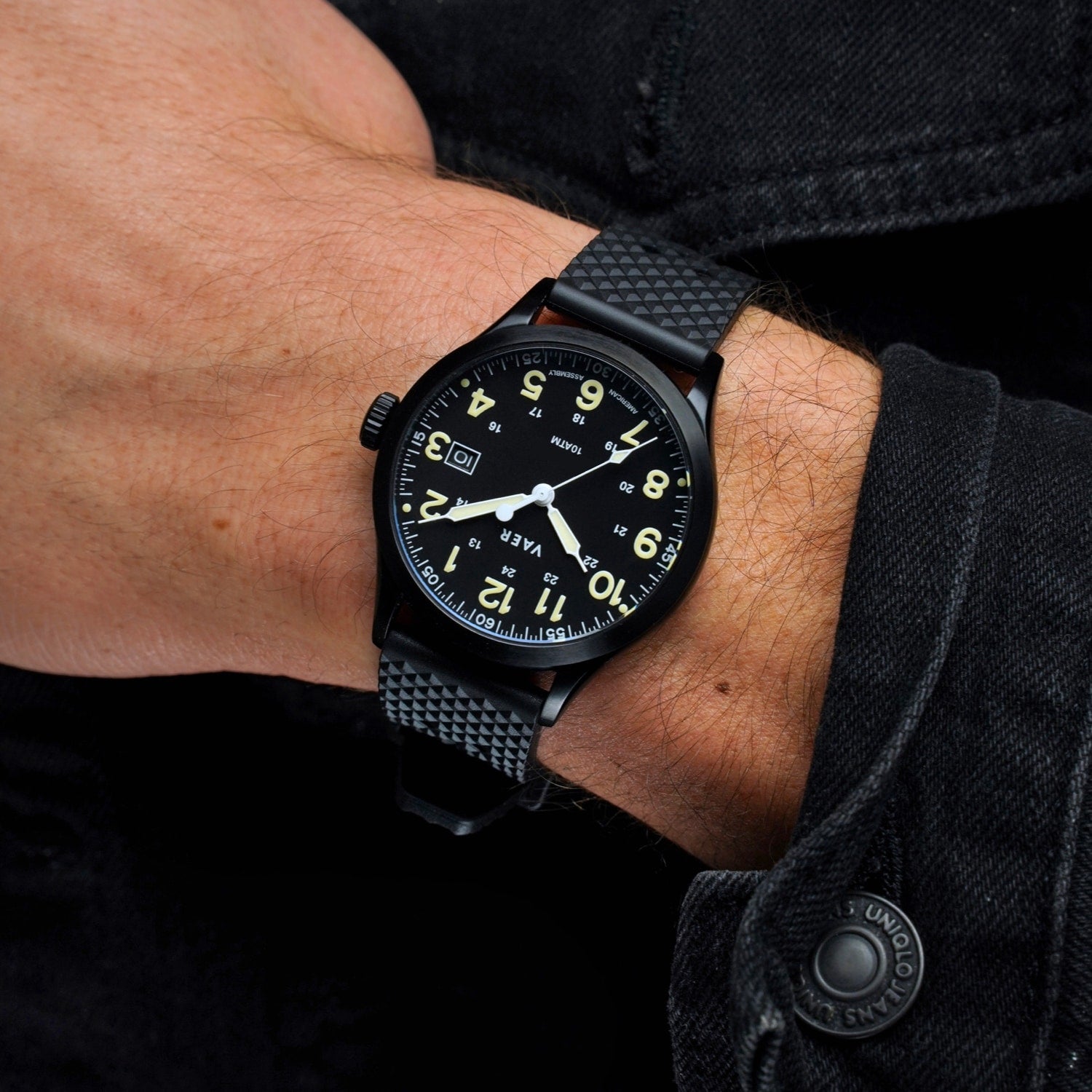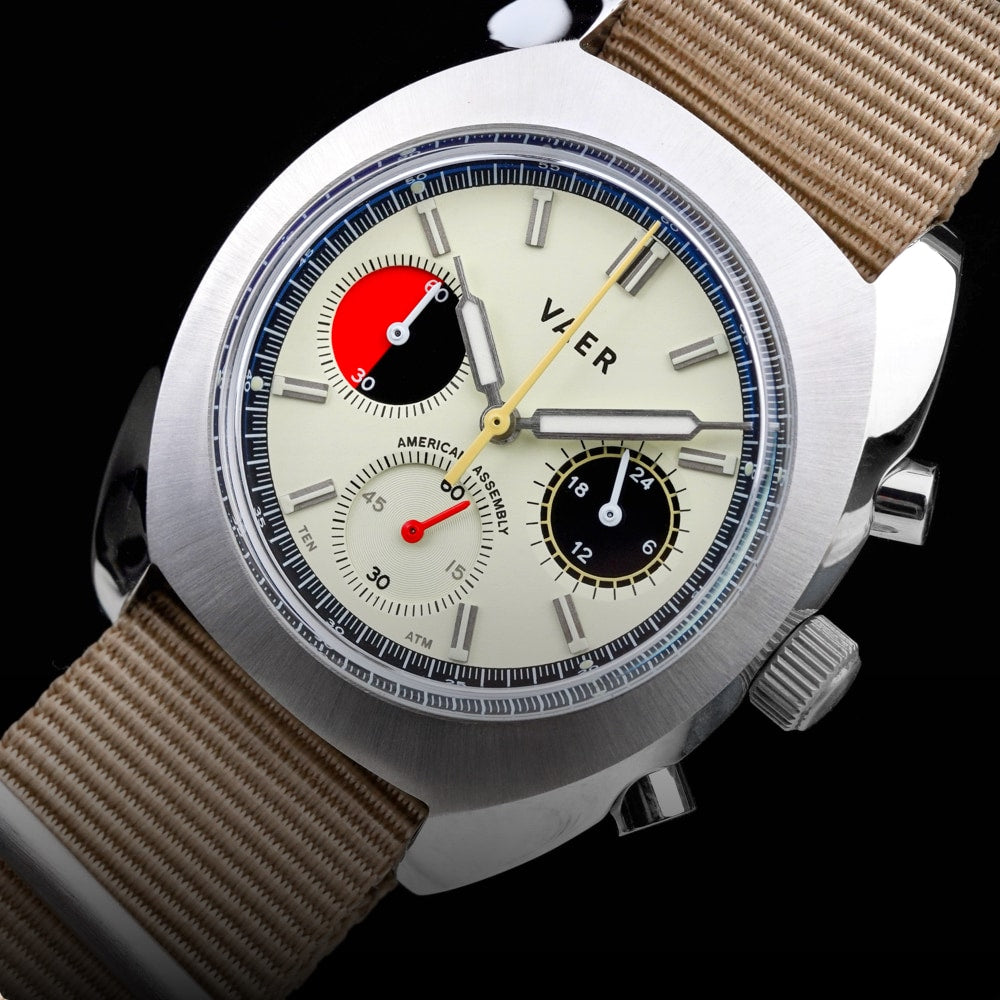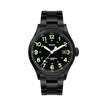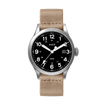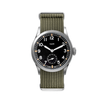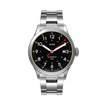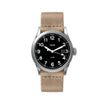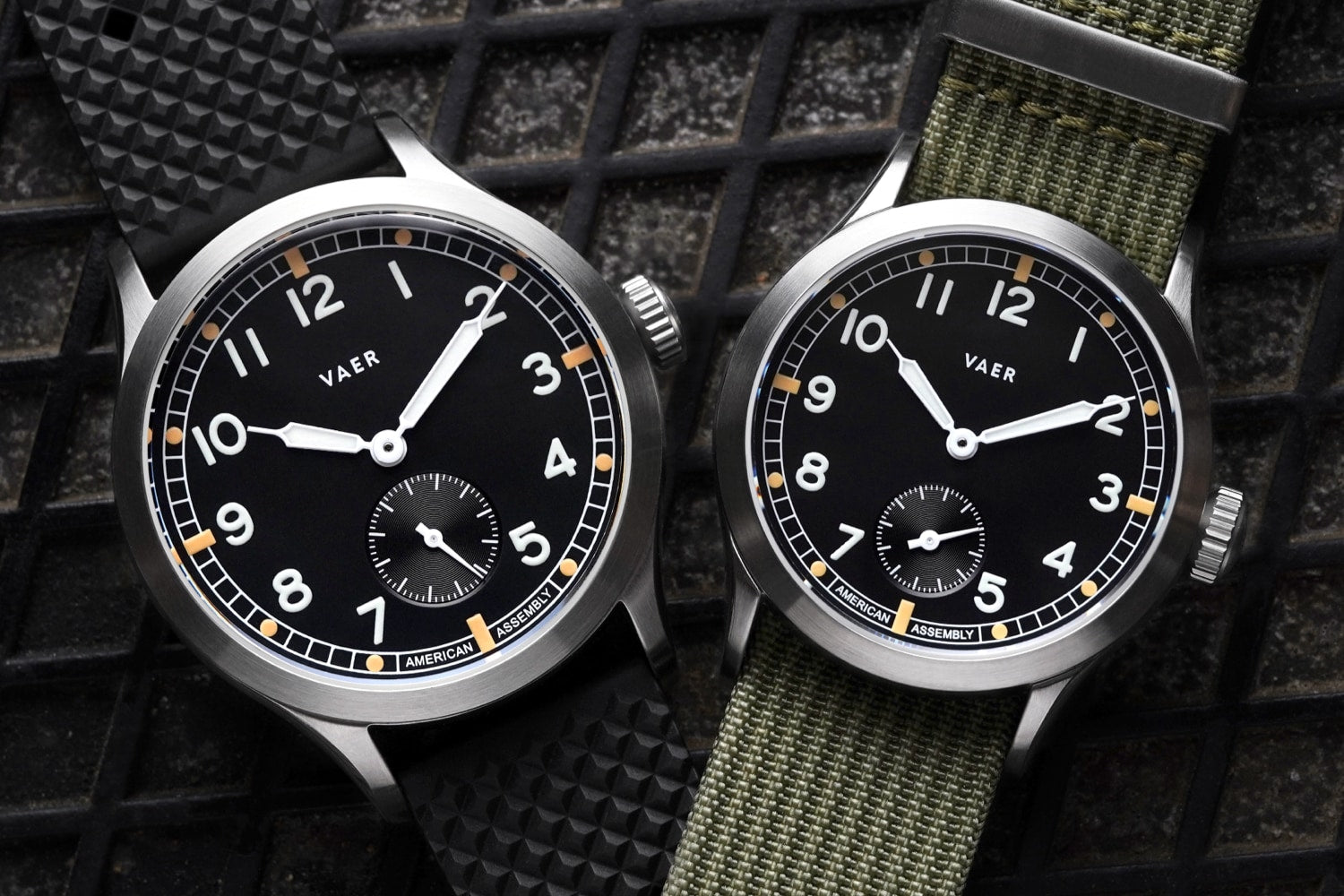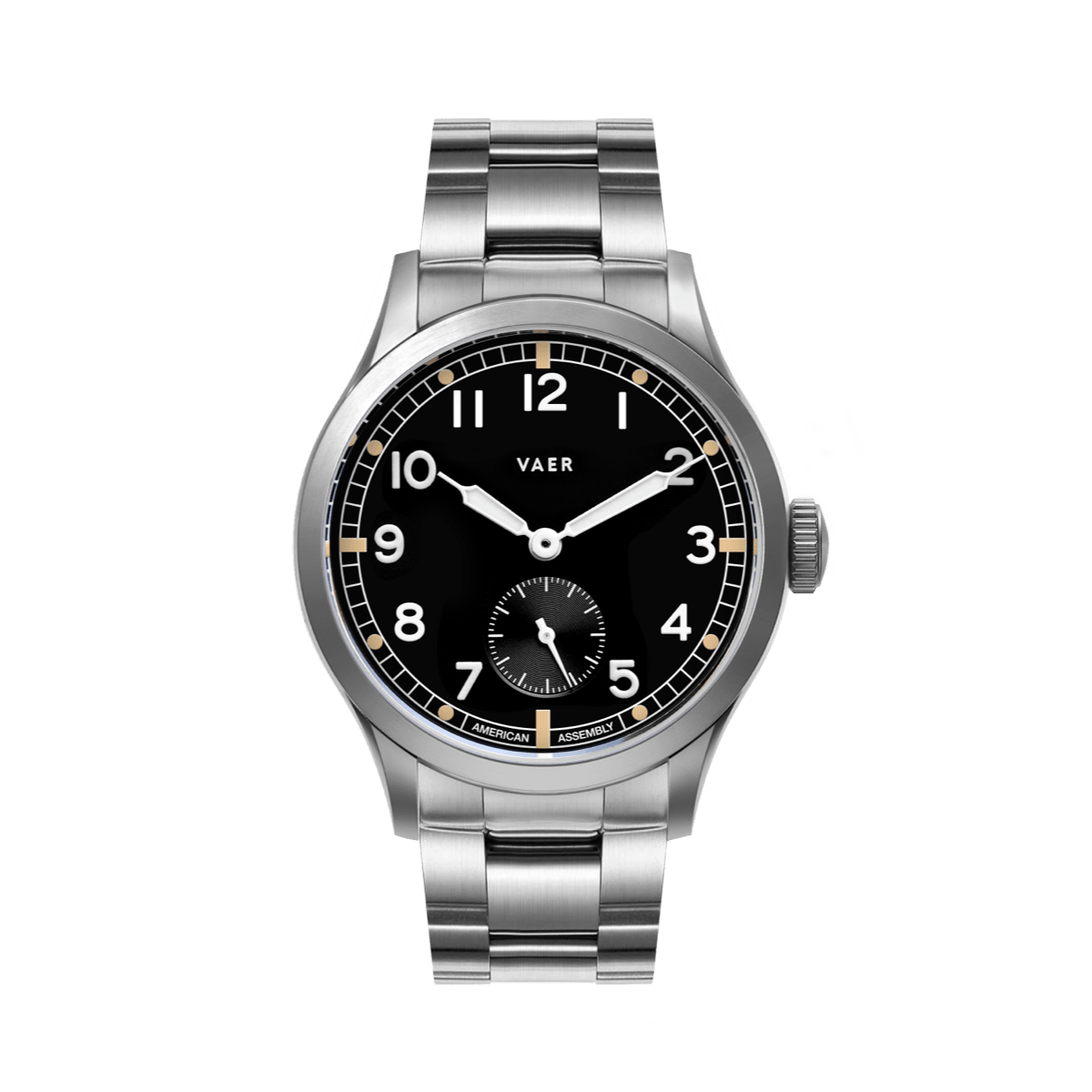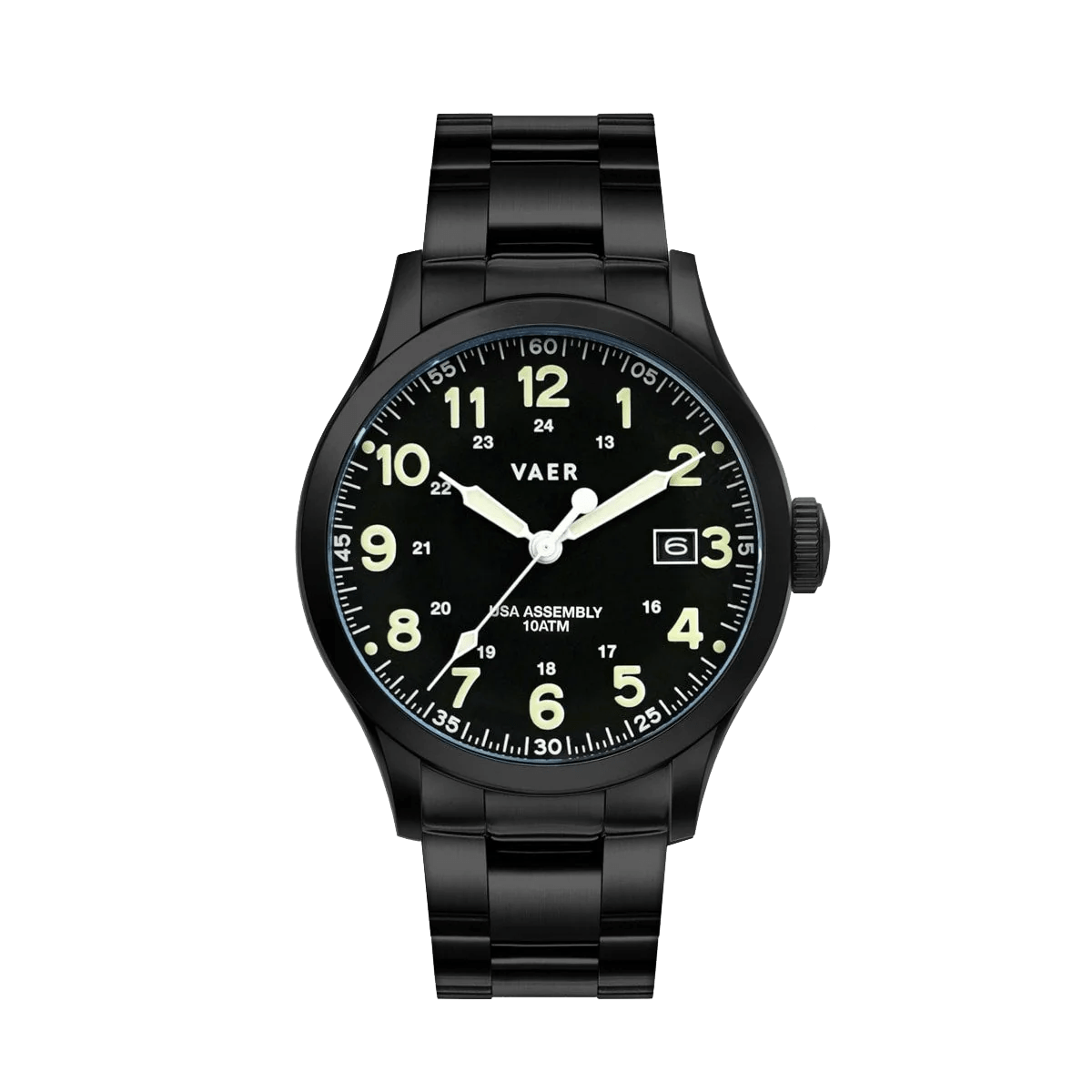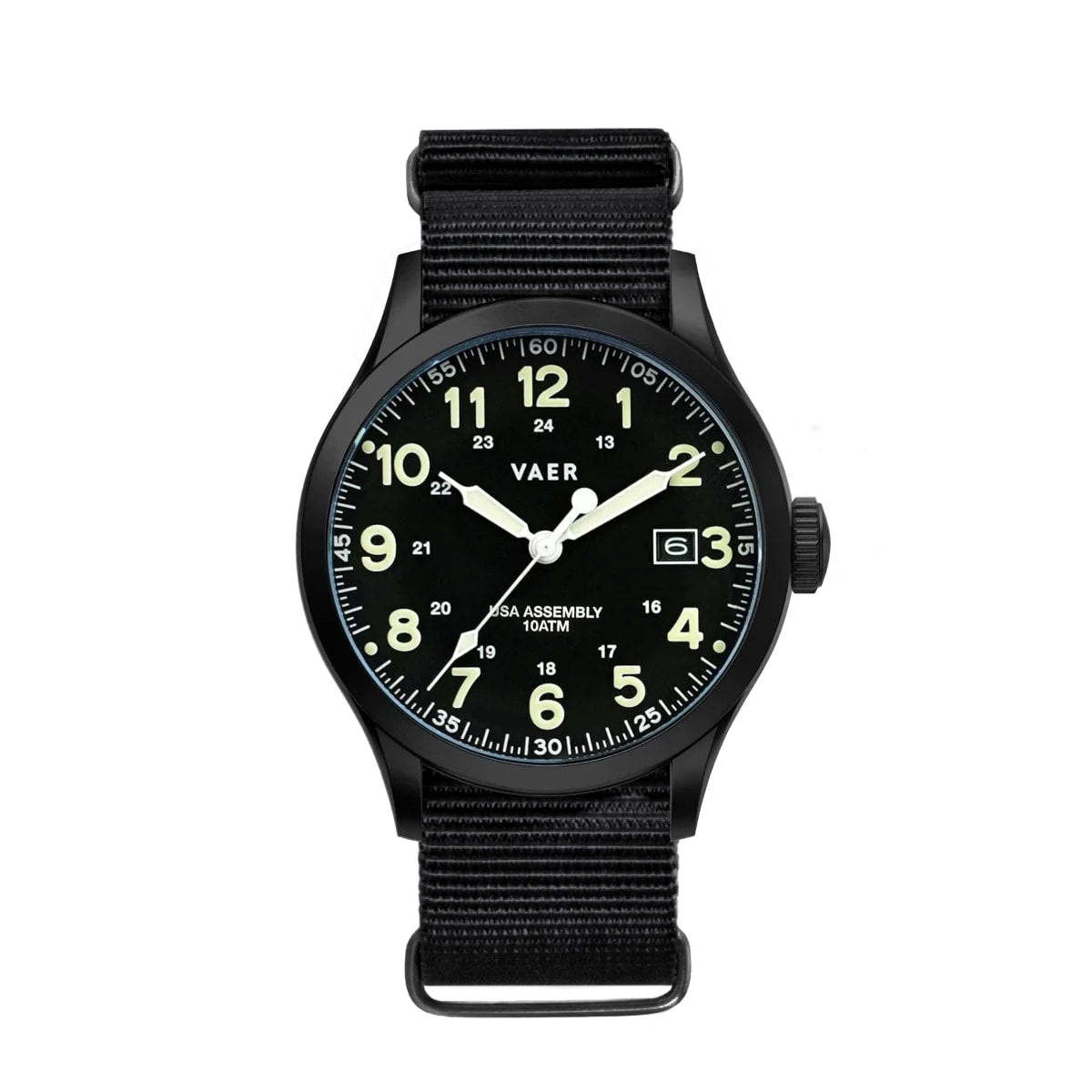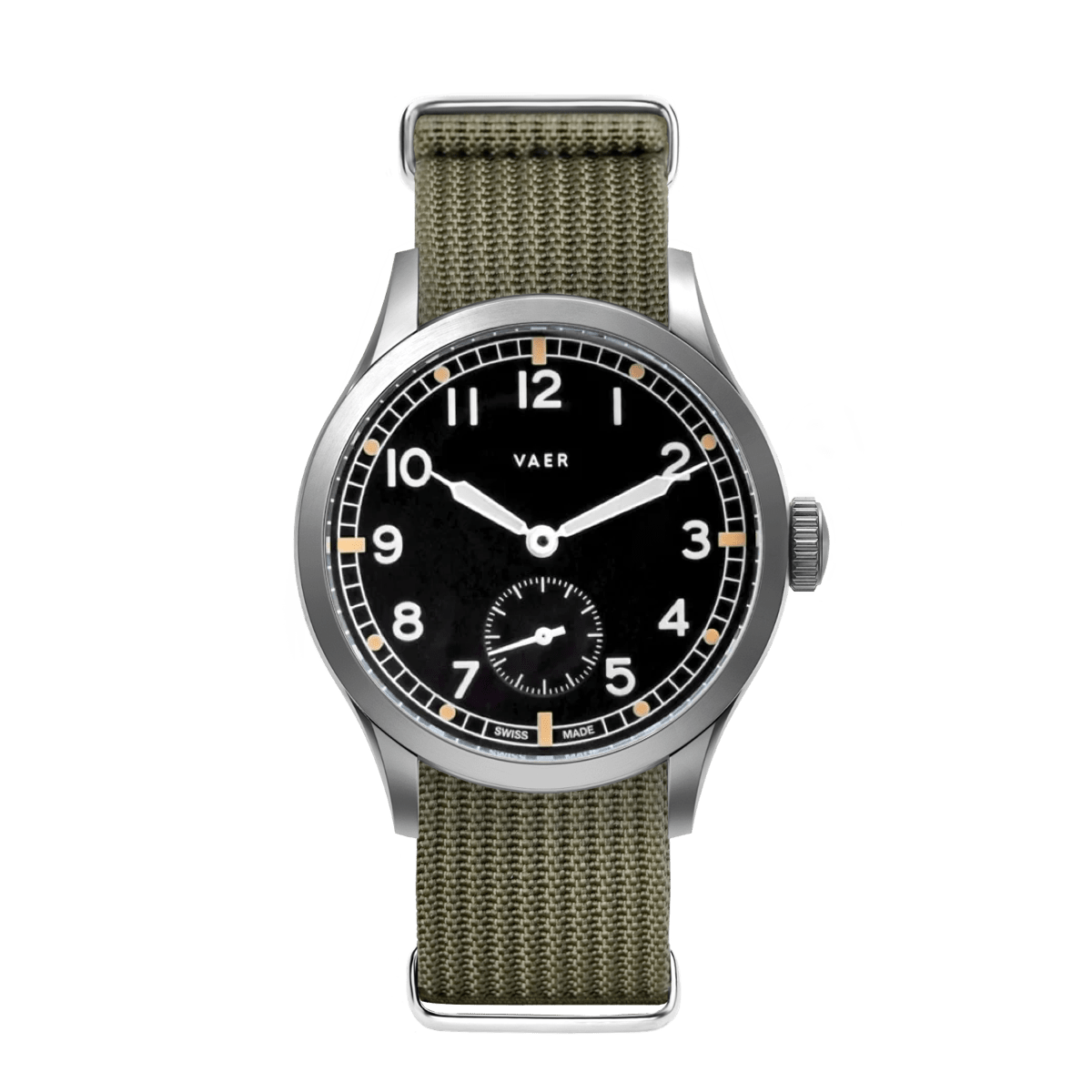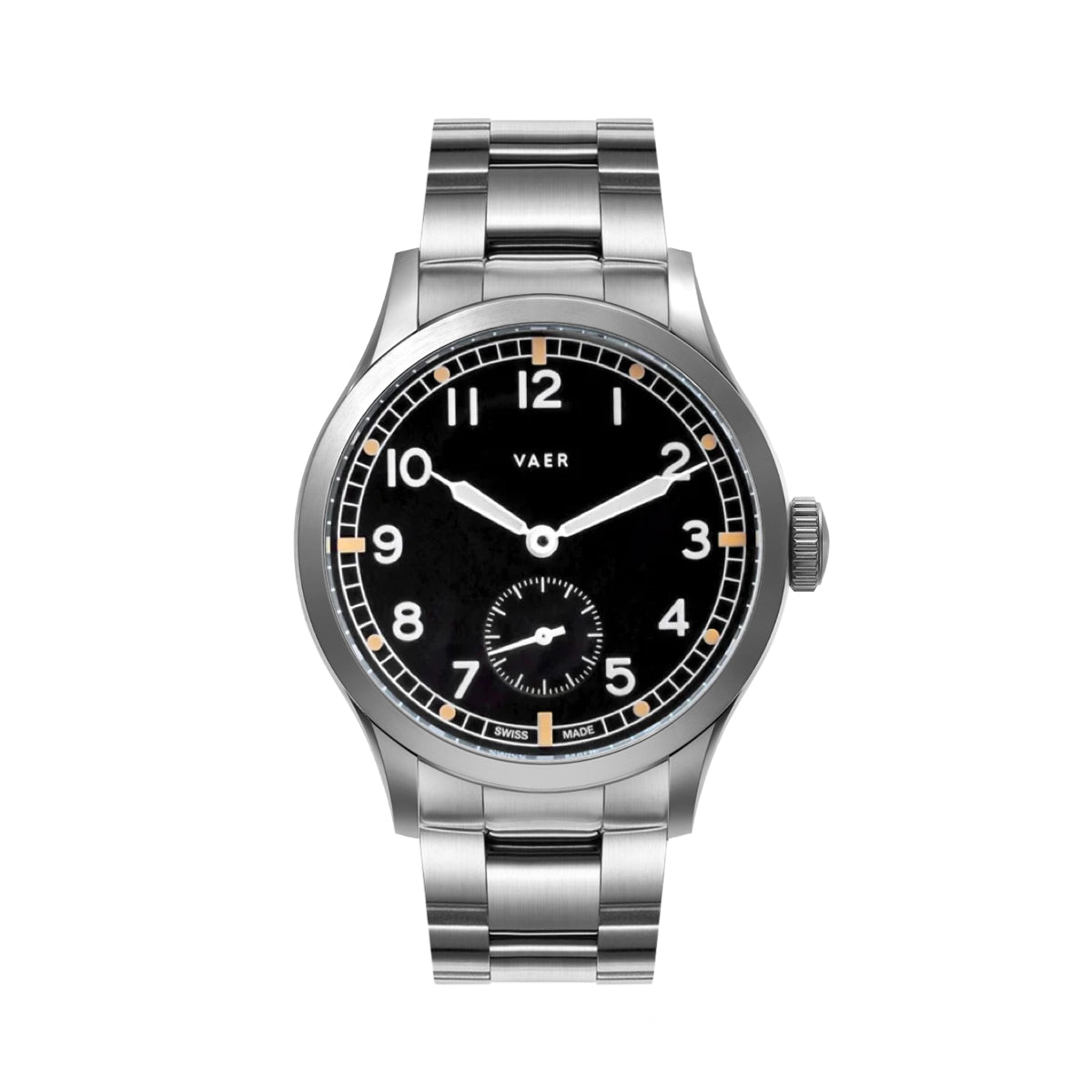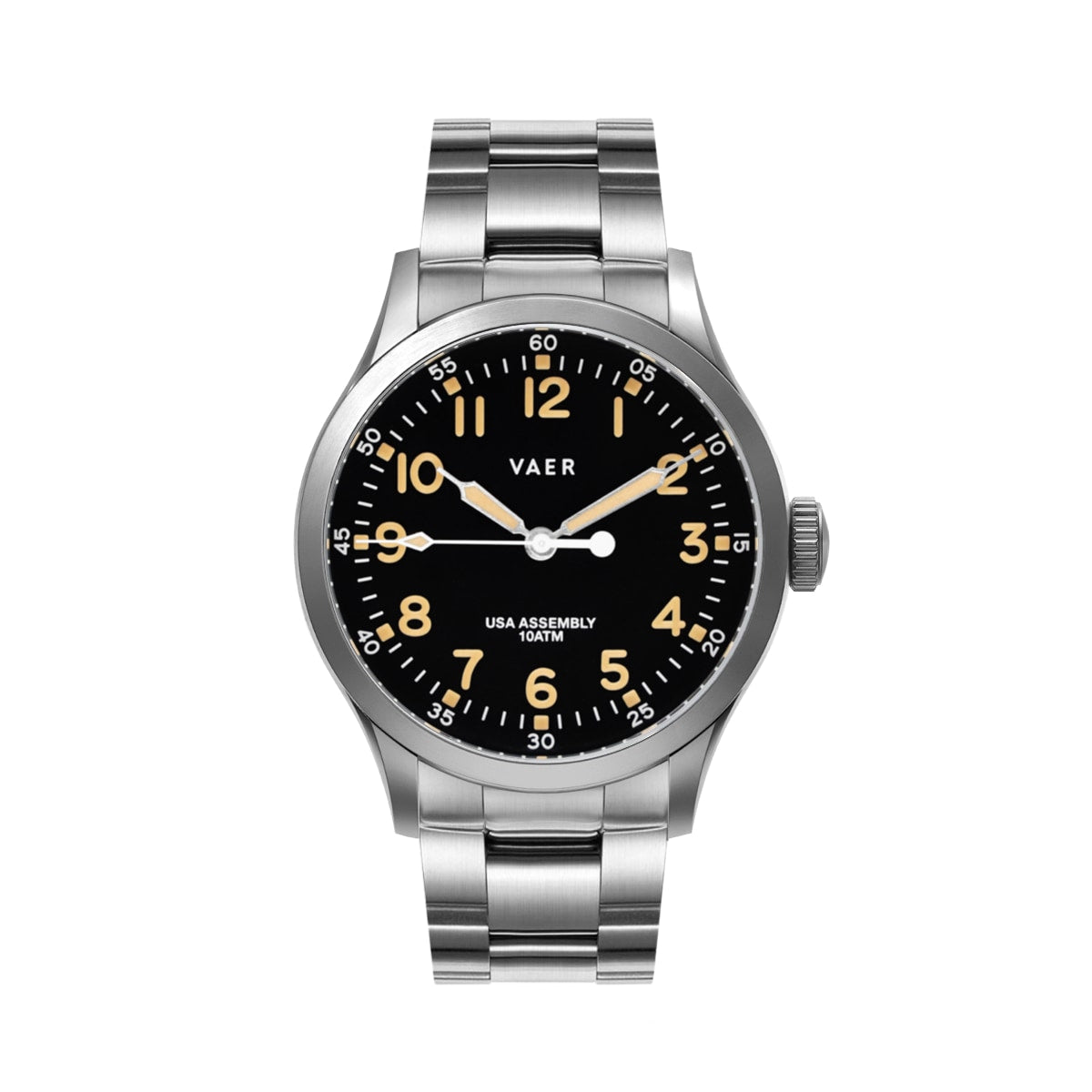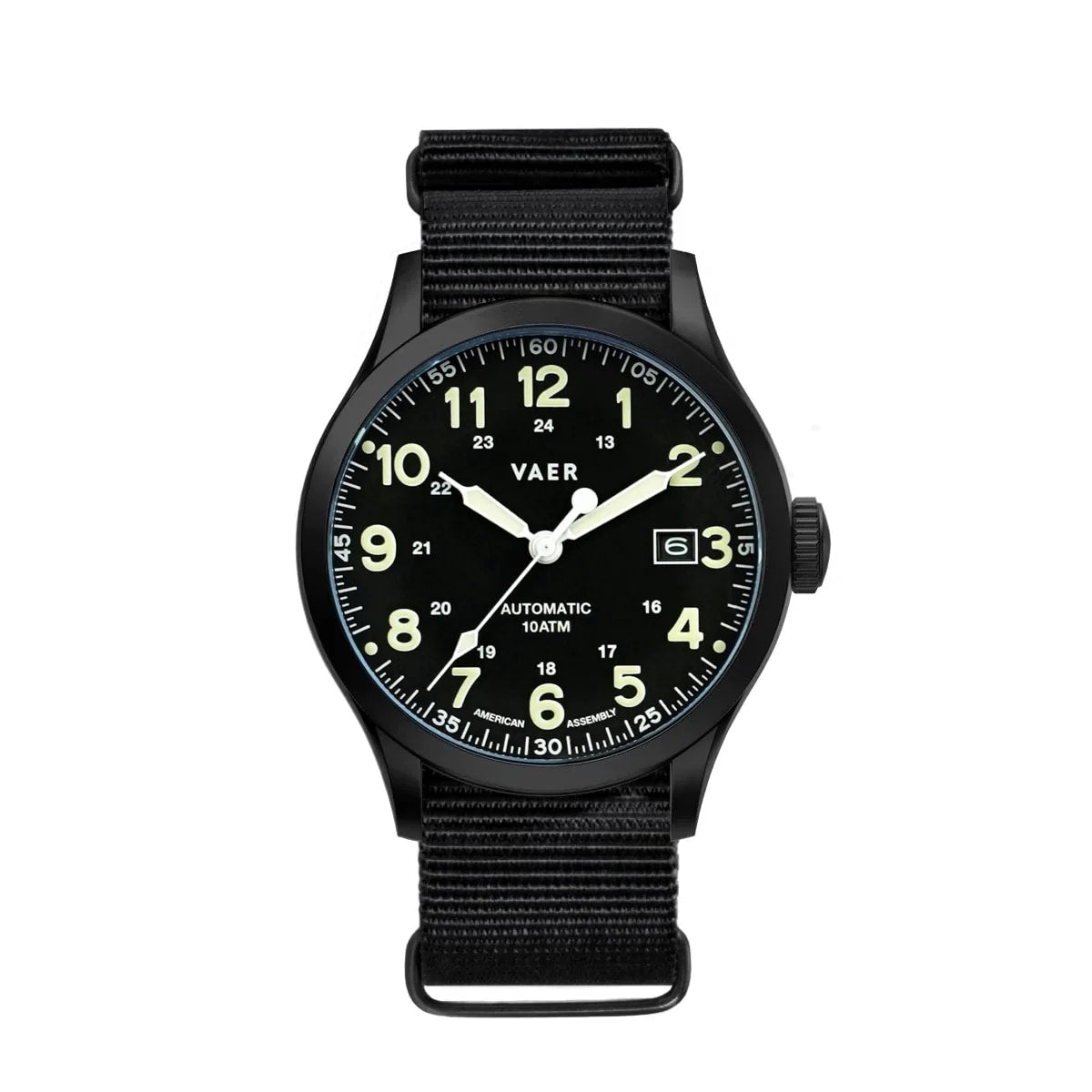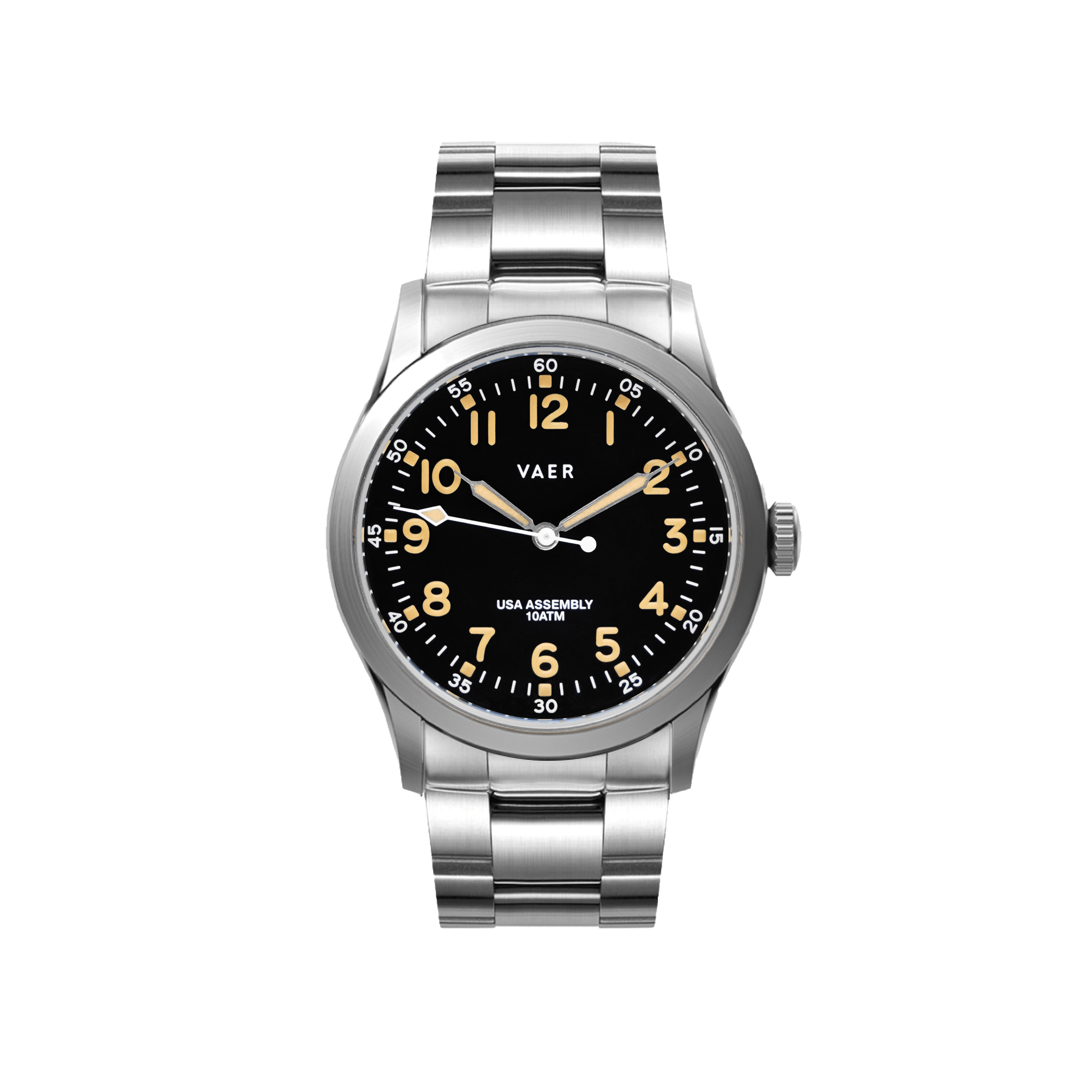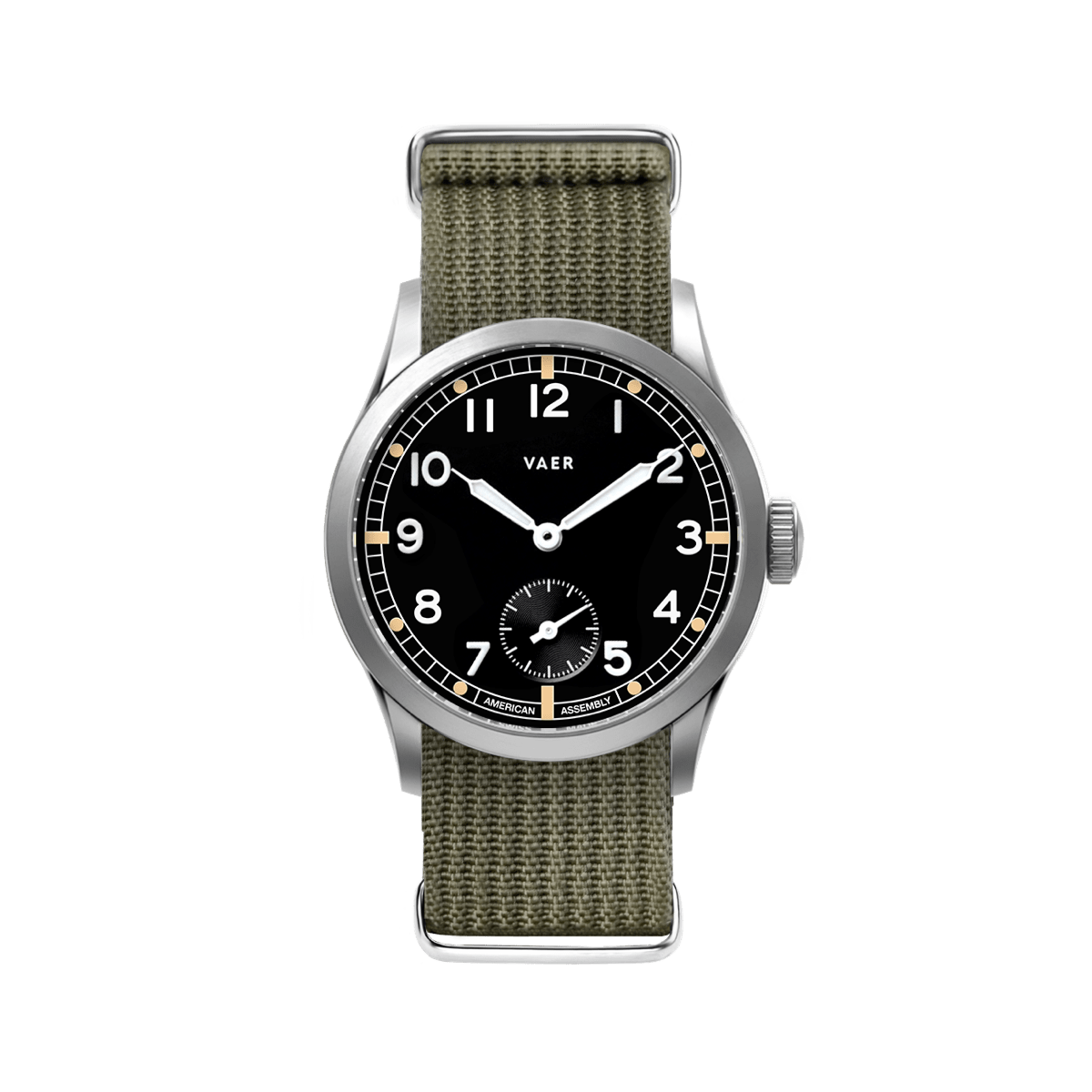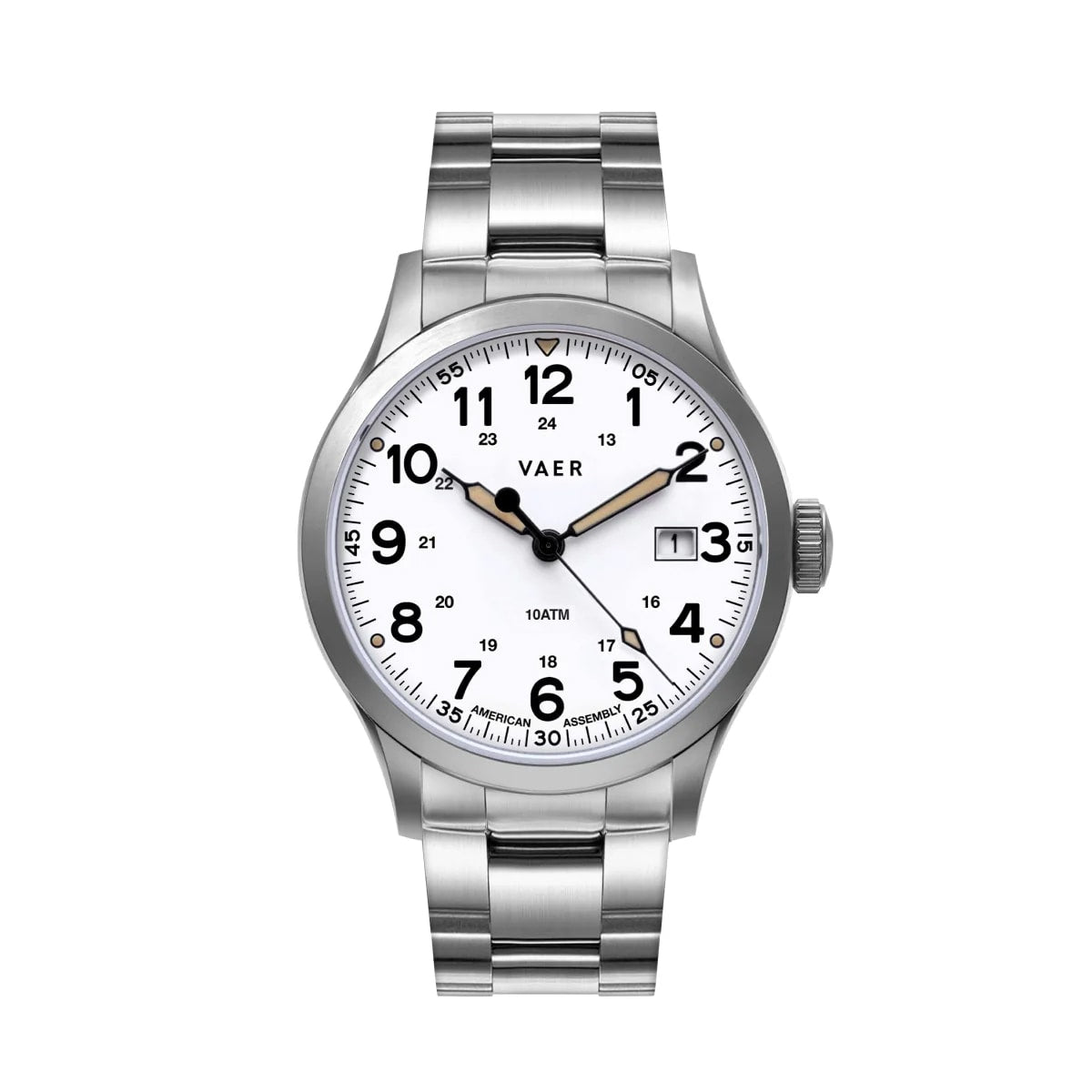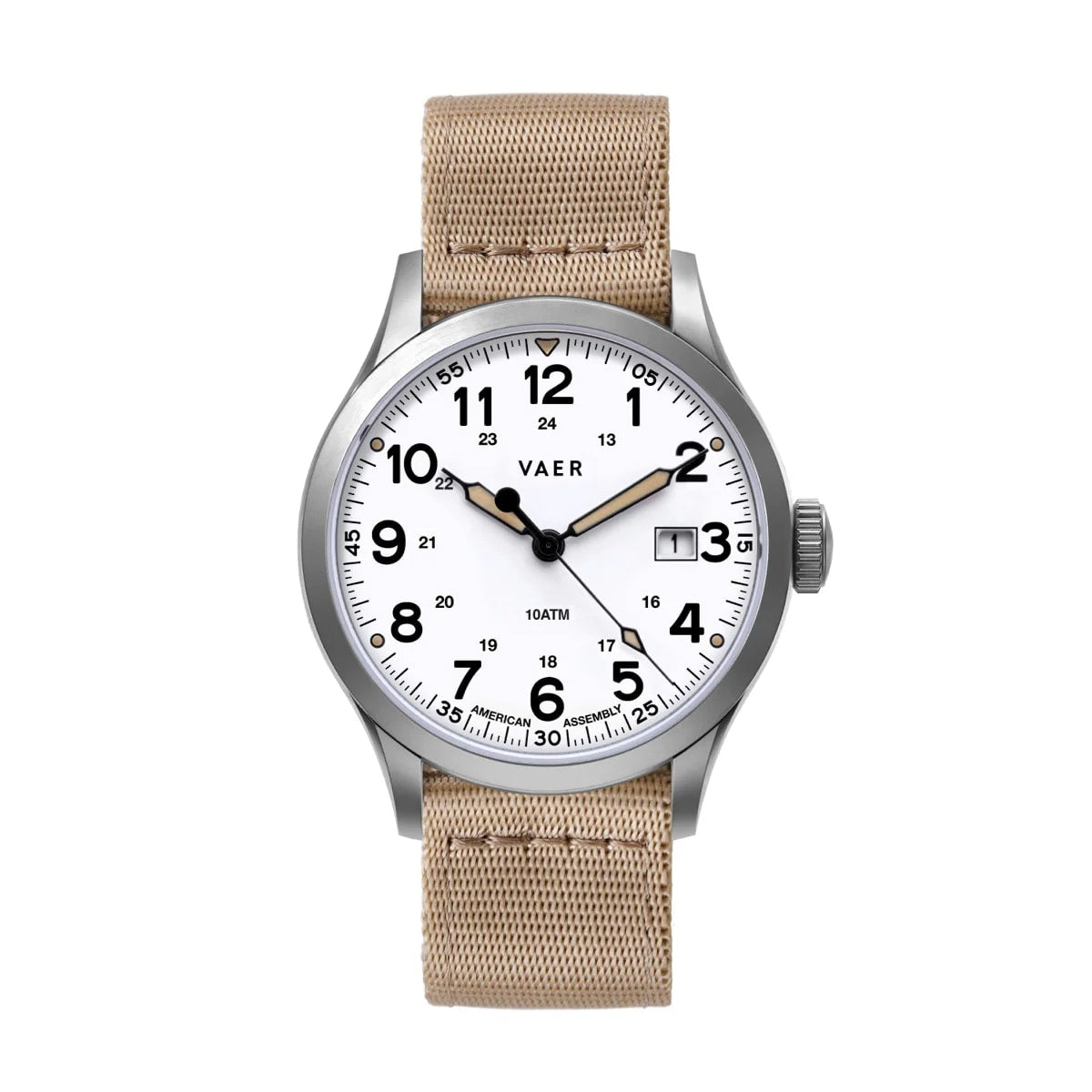As we commemorate the 80th anniversary of the Allied invasion of Normandy on June 6, 1944, we thought it would be a good time to reflect on the the pivotal role wristwatches played in World War II, and also share some of the unique aspects of early tool watches, and how they continue to inform the design decisions of modern brands to this very day.
The watches of WW2 were not merely accessories but critical instruments that influenced the outcome of the war. These timepieces ensured that soldiers could execute precise, coordinated actions, which were especially critical during large-scale operations such as D-Day.

Building Watches for World War II
One of the most significant innovations between World War I and World War II was the development of waterproof watches, epitomized by the Rolex Oyster. This advancement dramatically altered the possibilities for field watches in combat.
Introduced in 1926, the Rolex Oyster was the world’s first waterproof wristwatch. Its revolutionary design included a hermetically sealed case, which protected the movement from dust, moisture, and pressure.
- Hermetically Sealed Case: The case design, with a screw-down crown and case back, created a tight seal that prevented water ingress.
- Durability and Reliability: The waterproof nature of the Oyster made it ideal for soldiers and divers, who needed reliable timepieces that could withstand harsh conditions.
The innovation of the waterproof watch significantly enhanced the durability and functionality of military watches, making them more reliable under combat conditions. Waterproof watches could be worn in the wet and muddy trenches, during amphibious landings, and in various extreme environments without fear of damage.
While Rolex Oyster watches were not widely worn during the war (aside from limited use by some British divers and commandos), their innovations in water-resistance inspired other Swiss manufacturers such as Omega, Longines, and Jaeger-LeCoultre, as well as American manufacturers like Elgin, and Bulova.

The A-11 and Dirty Dozen Watches
Two of the most notable types of wristwatches worn during D-Day were the American A-11 and the British "Dirty Dozen" watches.
The A-11 Watch
The A-11, produced by American manufacturers such as Bulova, Elgin, and Waltham, it became known as "the watch that won the war." Its high accuracy, legibility, and durability made it a trusted companion for U.S. troops.
A-11 Field Watch Specifications:
- Movement Type: Manual-winding
- Caliber: Various calibers (e.g., Bulova 10AK, Elgin 539, Waltham 6/0)
- Jewels: Typically 15-17 jewels
- Frequency: 18,000 beats per hour (BPH)
- Case Material: Stainless steel or base metal with a plated finish
- Diameter: Approximately 32-34mm
- Thickness: About 10mm
- Lug Width: 16mm
- Case Back: Snap-on or screw-down, often with military engravings
- Dial Color: Usually black or white
- Dial Markers: Arabic numerals with radium lume paint
- Hands: Hour/minute hands with lume paint, and a center seconds hand
- Crystal Material: Acrylic or mineral glass
- Material: Canvas or leather, often with fixed lug bars
-
Water Resistance: Limited; not meant for prolonged submersion

The Dirty Dozen Watches
The British military commissioned twelve manufacturers, including Omega, Longines, and Jaeger-LeCoultre, to produce the "Dirty Dozen" watches. These timepieces were built to the Ministry of Defence's specifications and distributed among British soldiers.
Dirty Dozen Field Watch Specifications:
- Movement Type: Manual-winding
- Caliber: Various calibers (e.g., Omega 30T2, JLC Cal. 479, IWC Cal. 83)
- Jewels: Typically 15 jewels
- Frequency: 18,000 beats per hour (BPH)
- Case Material: Stainless steel
- Diameter: Approximately 35-36mm
- Thickness: About 11mm
- Lug Width: 18mm
- Case Back: Screw-down, with broad arrow and WWW markings
- Color: Usually black
- Markers: Arabic numerals with radium lume paint
- Hands: Hour/minute hands with lume paint, small seconds at 6 o'clock
- Crystal Material: Acrylic
- Material: Canvas or leather, often with fixed lug bars
- Water Resistance: Designed to be waterproof, but not for deep diving

Role of Wristwatches in D-Day Operations
Operation Overlord, the codename for the Battle of Normandy, presented a labyrinth of logistical challenges that tested the limits of Allied planning and execution. One of the most intricate aspects was the coordination of a massive amphibious assault involving over 156,000 troops from the United States, United Kingdom, Canada, and other Allied nations, necessitating an extraordinary fleet of 5,000 ships and landing craft to traverse the English Channel.
The operation required meticulous timing to ensure surprise and optimal tidal conditions; the chosen date, June 6, 1944, was a calculated gamble based on a narrow window of favorable weather, moonlight, and tidal conditions. Additionally, the Allies had to construct artificial harbors, known as Mulberries, to facilitate the rapid unloading of men and material, and maintain an uninterrupted supply line amidst fierce German resistance. This monumental effort was pivotal not just for its scale but for its strategic impact—it marked the beginning of the end for Nazi Germany, opening a crucial Western Front that would lead to the liberation of Western Europe and ultimately contribute to the Axis powers' defeat.

Coordination and Synchronization
The success of D-Day hinged on the ability of Allied forces to launch a synchronized assault across multiple beaches (Utah, Omaha, Gold, Juno, and Sword). Wristwatches enabled unit commanders and individual soldiers to adhere to a strict timetable, ensuring that the landings, artillery barrages, air support, and subsequent movements were all executed in harmony.
On June 6, 1944, Operation Overlord unfolded in a series of meticulously timed events that marked the beginning of the Allied invasion of Normandy:
00:00 - 02:00: The invasion commenced with airborne operations. Around midnight, paratroopers from the U.S. 82nd and 101st Airborne Divisions and the British 6th Airborne Division were dropped behind enemy lines to secure key objectives and disrupt German defenses.
03:00 - 04:00: Allied bombers began a massive aerial bombardment targeting German coastal defenses along the Normandy beaches, aiming to weaken enemy fortifications before the amphibious landings.
05:00 - 06:00: The naval bombardment started, with over 1,200 Allied warships unleashing a barrage of artillery on German positions along the beaches. This intense shelling was designed to soften enemy defenses and create a safer landing zone for the incoming troops.
06:30: The first waves of infantry began landing on the beaches. American forces landed on Utah and Omaha beaches, while British forces targeted Gold and Sword beaches, and Canadian troops landed on Juno beach. Omaha Beach faced the fiercest resistance, resulting in significant casualties.
07:00 - 08:00: Despite heavy resistance, especially at Omaha Beach, troops continued to land and advance inland. The coordination of naval gunfire, air support, and infantry movements was critical during this phase.
12:00: By noon, the Allies had secured a foothold on several beachheads despite facing strong German counterattacks. The Mulberry harbors, floating piers, and artificial breakwaters began arriving to support the ongoing landing operations and supply chain.
17:00 - 18:00: Reinforcements and additional supplies continued to arrive as the Allies pushed further inland. Securing key towns and junctions became the focus, ensuring that the beachheads were linked and defensible.
Midnight: By the end of D-Day, approximately 156,000 Allied troops had successfully landed in Normandy, establishing a crucial foothold that set the stage for the broader campaign to liberate Western Europe.
Commanders at various levels used wristwatches to synchronize their actions and communications. This coordination was critical not just for the initial landings but also for subsequent movements inland, where timing continued to play a crucial role in the success of the broader operation.
Each unit had specific landing times, often down to the minute, to maximize the element of surprise and efficiency. Coordinated artillery and naval gunfire were scheduled to soften up German defenses just before the infantry landings. Watches were used to ensure that these bombardments ceased at precisely the right moment to prevent friendly fire incidents as troops stormed the beaches.

Conclusion
As we reflect on the 80th anniversary of D-Day, it’s evident that wristwatches played a pivotal role not just in the everyday lives of soldiers but in the very success of the Allied invasion of Europe. These timepieces, with their groundbreaking waterproof designs and rugged durability, were indispensable tools that enabled the precise coordination necessary for such a complex and multifaceted assault.
From the paratroopers' midnight drops to the synchronized bombardments and landings, wristwatches ensured that every movement adhered to the meticulously planned timetable. Today, as modern watch brands like Vaer draw inspiration from these wartime innovations, we are reminded of the enduring legacy of these instruments of precision and reliability—symbols of the indomitable spirit and technological ingenuity that helped shape the course of history.


